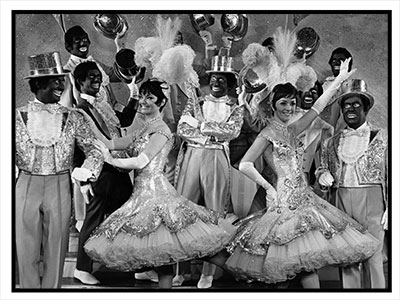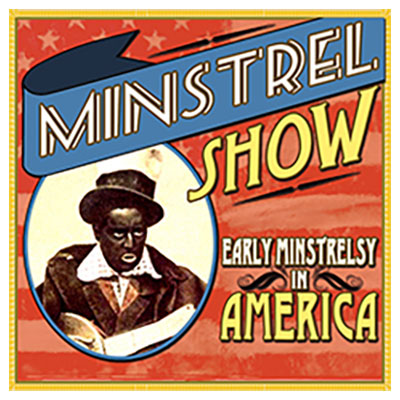Minstrel troupes composed of Black performers were formed after the American Civil War, and a number of these, including the Hicks and Sawyer Minstrels, had Black owners and managers. Some, such as Callendar’s Consolidated Spectacular Colored Minstrels, were popular in both the United  States and Britain in the late 19th and early 20th centuries. Initially these shows were staged by all-male companies that included male alto and soprano singers. The larger Black minstrel shows included bands of multitalented instrumentalists to play marches for the troupe’s parades in the daytime and perform string accompaniments for the evening shows. In addition to some music by Stephen Foster, their repertoire featured music by Black composers such as James Bland, a popular singer-banjoist who wrote some 700 songs, including “Carry Me Back to Old Virginny.” In general, these minstrel shows were the only theatrical medium in which gifted Black performers of the period could support themselves. States and Britain in the late 19th and early 20th centuries. Initially these shows were staged by all-male companies that included male alto and soprano singers. The larger Black minstrel shows included bands of multitalented instrumentalists to play marches for the troupe’s parades in the daytime and perform string accompaniments for the evening shows. In addition to some music by Stephen Foster, their repertoire featured music by Black composers such as James Bland, a popular singer-banjoist who wrote some 700 songs, including “Carry Me Back to Old Virginny.” In general, these minstrel shows were the only theatrical medium in which gifted Black performers of the period could support themselves.
A few of the larger companies employed both Black and white performers. By the 20th century, women were also appearing in minstrel shows; the great blues singers Ma Rainey and Bessie Smith were both minstrel performers early in their careers. Minstrel shows had effectively disappeared by the mid-20th century. However, vestiges of their racial stereotyping and performance aesthetics persisted for decades in various performance mediums, including television situation comedies such as Sanford and Son, Good Times, and The Jeffersons, which aired in the United States in the 1970s and ’80s.
|




 States and Britain in the late 19th and early 20th centuries. Initially these shows were staged by all-male companies that included male alto and soprano singers. The larger Black minstrel shows included bands of multitalented instrumentalists to play marches for the troupe’s parades in the daytime and perform string accompaniments for the evening shows. In addition to some music by Stephen Foster, their repertoire featured music by Black composers such as James Bland, a popular singer-banjoist who wrote some 700 songs, including “Carry Me Back to Old Virginny.” In general, these minstrel shows were the only theatrical medium in which gifted Black performers of the period could support themselves.
States and Britain in the late 19th and early 20th centuries. Initially these shows were staged by all-male companies that included male alto and soprano singers. The larger Black minstrel shows included bands of multitalented instrumentalists to play marches for the troupe’s parades in the daytime and perform string accompaniments for the evening shows. In addition to some music by Stephen Foster, their repertoire featured music by Black composers such as James Bland, a popular singer-banjoist who wrote some 700 songs, including “Carry Me Back to Old Virginny.” In general, these minstrel shows were the only theatrical medium in which gifted Black performers of the period could support themselves. 